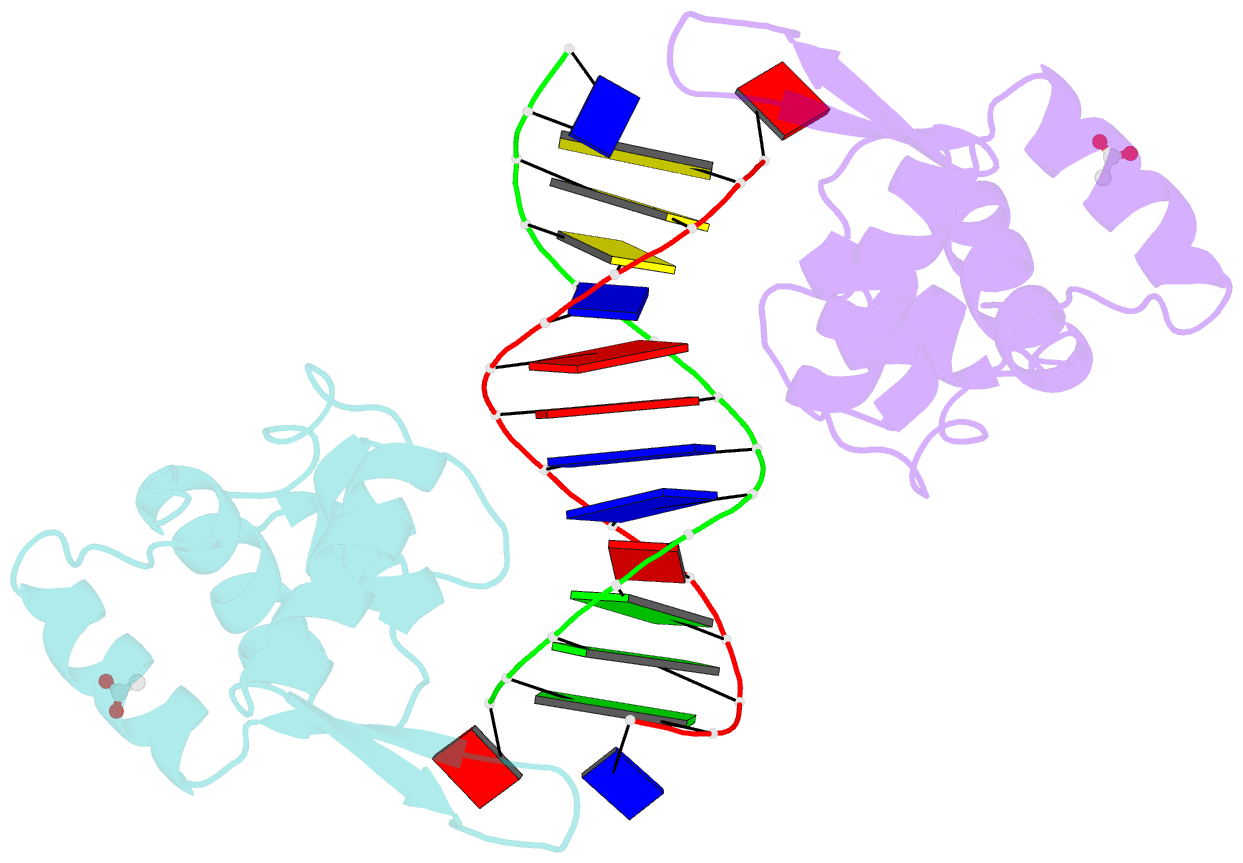Summary information and primary citation
- PDB-id
- 3aaf; SNAP-derived features in text and JSON formats;
DNAproDB
- Class
- DNA binding protein-DNA
- Method
- X-ray (1.9 Å)
- Summary
- Structure of wrn rqc domain bound to double-stranded DNA
- Reference
- Kitano K, Kim SY, Hakoshima T (2010): "Structural basis for DNA strand separation by the unconventional winged-helix domain of RecQ helicase WRN." Structure, 18, 177-187. doi: 10.1016/j.str.2009.12.011.
- Abstract
- The RecQ family of DNA helicases including WRN (Werner syndrome protein) and BLM (Bloom syndrome protein) protects the genome against deleterious changes. Here we report the cocrystal structure of the RecQ C-terminal (RQC) domain of human WRN bound to a DNA duplex. In the complex, the RQC domain specifically interacted with a blunt end of the duplex and, surprisingly, unpaired a Watson-Crick base pair in the absence of an ATPase domain. The beta wing, an extended hairpin motif that is characteristic of winged-helix motifs, was used as a "separating knife" to wedge between the first and second base pairs, whereas the recognition helix, a principal component of helix-turn-helix motifs that are usually embedded within DNA grooves, was unprecedentedly excluded from the interaction. Our results demonstrate a function of the winged-helix motif central to the helicase reaction, establishing the first structural paradigm concerning the DNA structure-specific activities of the RecQ helicases.





